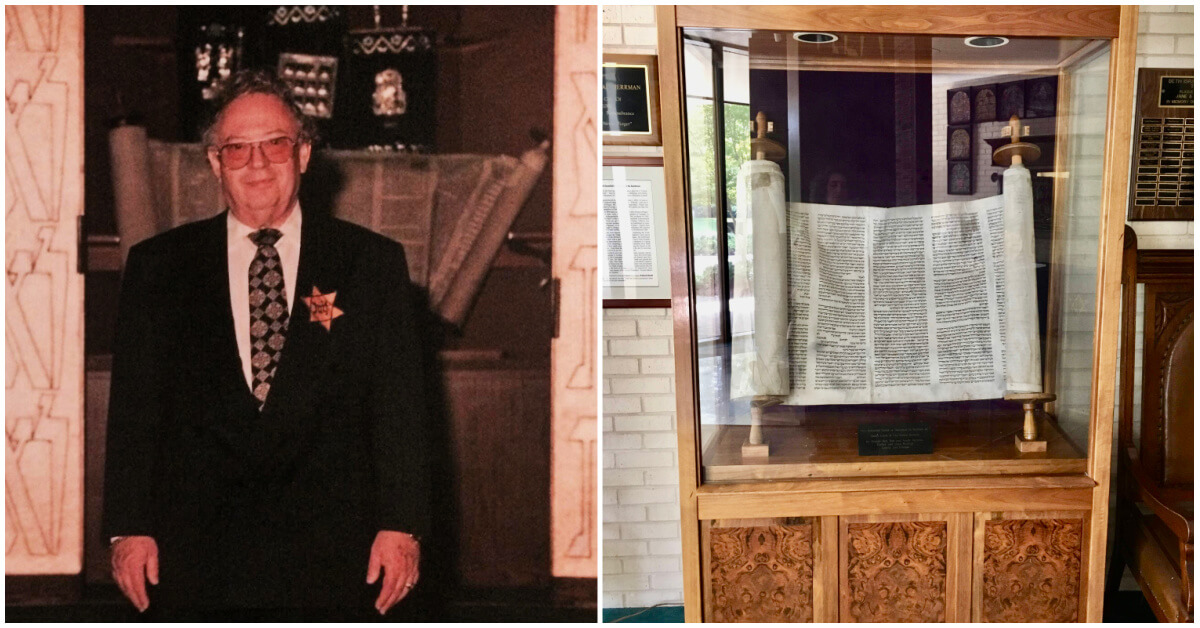I Hid From Neo-Nazis In Poland. But They Found Me Online

Image by Getty Images
On November 11th, 60,000 protesters assembled in Warsaw to commemorate Polish Independence Day. The march was organized in part by two self-described “radical nationalist” youth movements, both of which draw their names from anti-Semitic leagues of the 1920’s and 30’s. The protest featured torches, chants of “Sieg Heil” and “Ku Klux Klan,” and banners reading “White Europe” and “Clean Blood.”
As a contingency of the protest marched through my Warsaw neighborhood in the former Jewish Ghetto, I hid. I’m Jewish, and I was terrified. I closed the windows, unplugged every light, and retreated to the bathroom, as I later depicted in the Forward.
I knew that my piece would garner attention. But I didn’t foresee the emotions it would elicit or the intensity of debate it would spark. And I definitely didn’t foresee the online hateful barrage aimed at me, so clearly aligned with the march’s anti-Semitic roots.
As I wrote in my first piece, I came to Warsaw because I didn’t believe what I’d been told about anti-Semitism. If the march wasn’t enough to convince me that anti-Semitism remains alive and well in Poland and elsewhere, the response I got to my piece certainly was.
It wasn’t all bad. I received thoughtful, encouraging, and at times apologetic emails from many Polish readers, Polish people who are worried by the country’s shift toward insularity.
But there were some ugly responses, too. Some wrote that Poland “doesn’t exist to serve or please Jews,” that I was a “man of Soros.” Over and over I read tweets, emails, and comments with a singular message: “Poland is for Poles.” I wrote to my editor to ask her to take the name of my street out of the piece, fearing that online attacks could become real threats.
@jdforward Don’t just hide in the washroom. Just leave. Poland is NOT your nation. Poland is for Poles. It doesn’t exist to serve or please Jews. Where do Jews get the chutzpah to think that Poles should not be patriotic in their own motherland? Jews are imperialists.
— Gubbler Chechenova (@gubblerchecheno) November 16, 2017
It was terrifying. But these were not the worst of it.
The most troubling part of the Polish response to my piece came not from the uneducated nationalist masses, but from Western-educated, seemingly cosmopolitan intellectual elites. These elites, who voiced their response to my piece on Twitter and in the comments section of the Forward, did not stoop to name calling. Rather, they introduced ahistorical facts and apologist language that should worry those who care about Poland’s future possibly as much as the anti-Semitic hate speech.
A few anecdotes:
A PhD history candidate from the country’s premier research institution insinuated in the comments section that my op-ed was “a propaganda piece on behalf of people that probably manipulated him into writing it.” This claim rehearses the ugly anti-Semitic notion of media manipulation by Jews, a mainstay of both propaganda of the past and today’s “alt-right”.
Then, a prominent Polish journalist and commentator maligned both my reporting of and reaction to the march, writing, “Lies, lies, lies. Awful, dreadful, disgusting lies…pathetic.” Both toxic masculinity and cries of ‘Fake News’ find a home in Poland, too, it turns out.
Explicit in many comments was the absolute victimhood complex that finds a home in the right-wing government today: Poles have been persecuted by the Germans and Russians for centuries, and therefore cannot be the oppressors when it comes to Jews and other minorities.
These views don’t come from nowhere. The idea that Poles are absolute victims – rather than a group capable of both hatred and compassion – is displayed all too clearly at the Museum of the History of Polish Jews (POLIN) where I went after my article’s publication with a fresh perspective. There I found that Polish pogroms and anti-Semitic fascist leagues are drastically underrepresented in the museum’s permanent exhibit. While the German’s atrocious treatment of Poland’s Jewish population is rightfully given space, the complicit role of some Poles in the Holocaust is absent, it seemed to me. A museum that claims to present history should present the entire history, both the heroic actions of Poles who helped Jews and the hateful actions of those who harmed them. We can learn from both.
I also got many responses from Jews to my piece. Many Polish Jews who fled the country wrote to tell me how dismayed they were that these elements still exist in such force. And yet, as I wrote, Jewish cultural and religious institutions are being rebuilt and remnant communities are thriving. The size of Jewish life isn’t comparable to life here before emigration and the Holocaust. Nevertheless, the remaining Jews persist.
Another frequent Jewish response I received was a call to physical action. Drawing on communally-internalized notions of Jewish men’s weakness, these readers urged me to arm myself and fight anti-Semites in the street.
To them, I say this: I fight with my words. My previous piece was shared thousands of times, sparking debate in America, Israel and Poland. Does that not do more to forward the cause of Jewish existence than my fists ever could?
The dynamics of my life in Warsaw have fundamentally changed since publication; many I barely knew have reached out with heartfelt support and validation — with calls of ‘I see you’ — while others I thought friends have clearly been made uncomfortable or worse by my naming and drawing attention to this dangerous political situation. For those, I have become the other, as we have always been.
Sans yarmulke, I could hide. Now, with publicization and a forthcoming documentary from Polish newsite Wirtualna Polska, I am truly an out Jew. I ended my last piece with an acknowledgement of my own naïveté: ‘The shelter has been cracked.’ I finish this with the same responding clause: A defiance seeps through.
Sam Rubin is a Fulbright Research Fellow based in Warsaw, Poland. The views and opinions expressed in this article are the author’s own and do not necessarily reflect those of the U.S. Government or Fulbright.
















